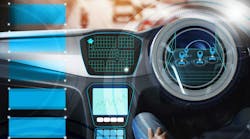Dreamstime_chanidaprachoomdaeng_131480
Members Only Content
Standards and Certifications Offer Guardrails for ADAS Development (Download)
Feb. 20, 2024
In the forward march of advanced driver-assistance systems (ADAS), progress has been immense. However, as the challenges come into focus, their magnitude has seemed to intensify.
When it comes to computing, the road to Level 5, SAE’s description of autonomous driving, is strewn with obstacles, and even lower SAE ADAS levels can be difficult to reach.
Think about speeds and feeds, for example. ADAS systems at every level demand a high level of data input and data transfer. Multiple sensors can easily generate 40 Gb/s and even fairly simple systems often funnel 4 Gb/s to microprocessors for their immediate use and decision-making.
Comments
Comments
